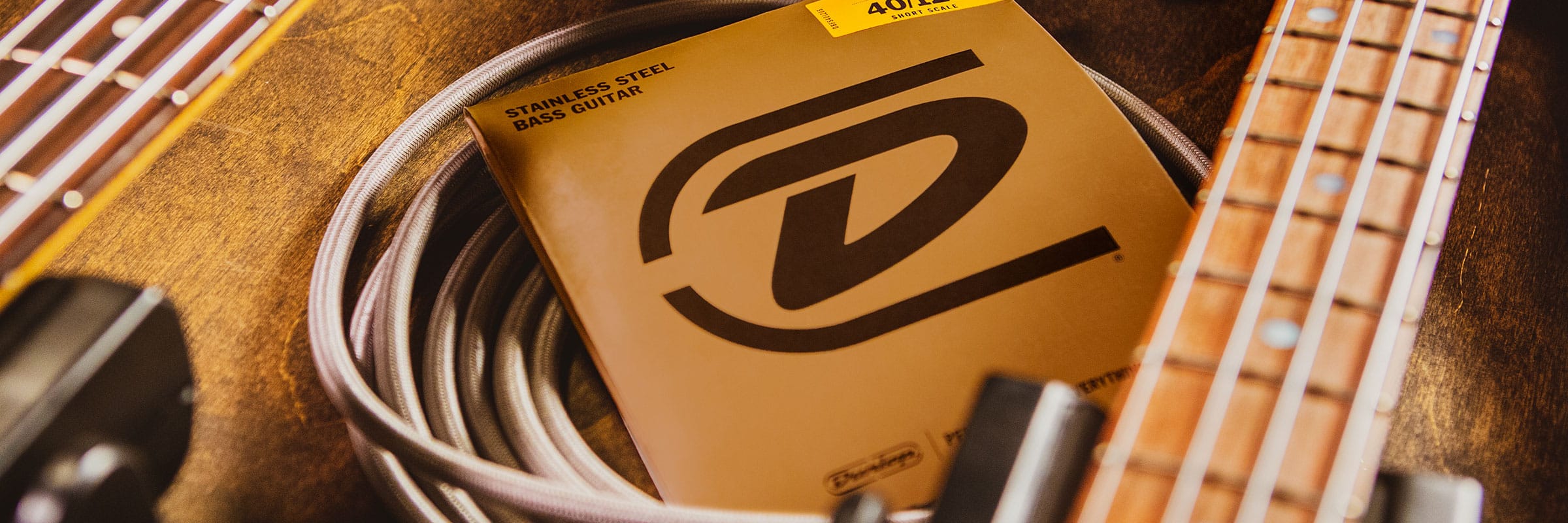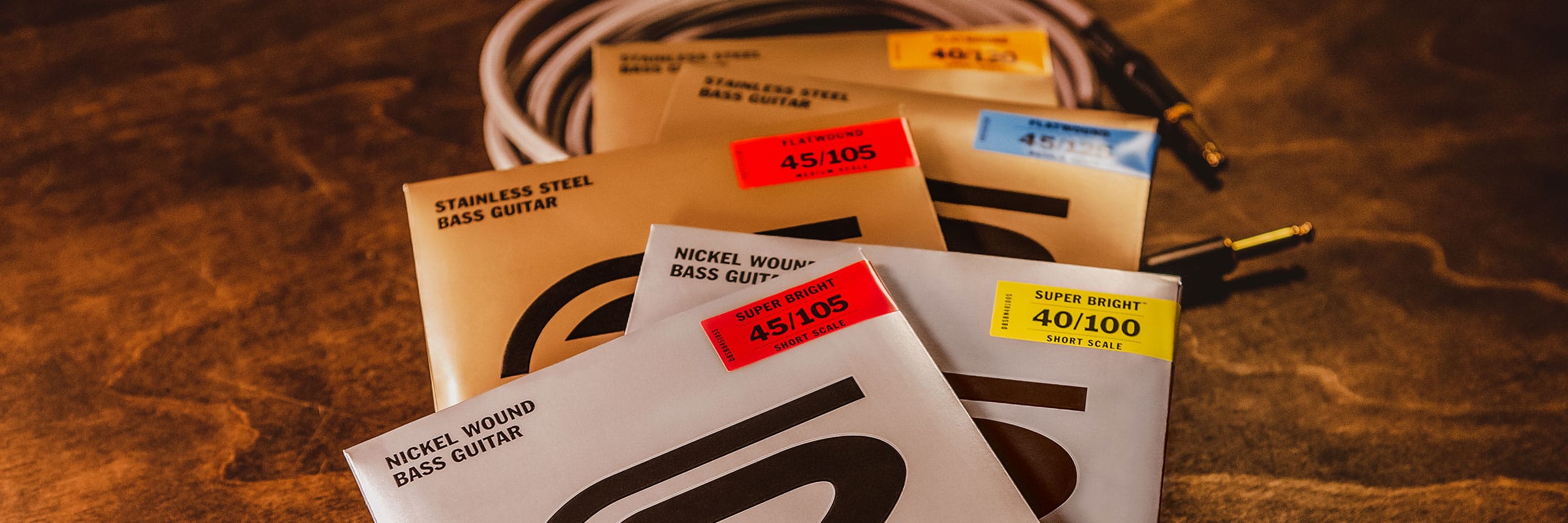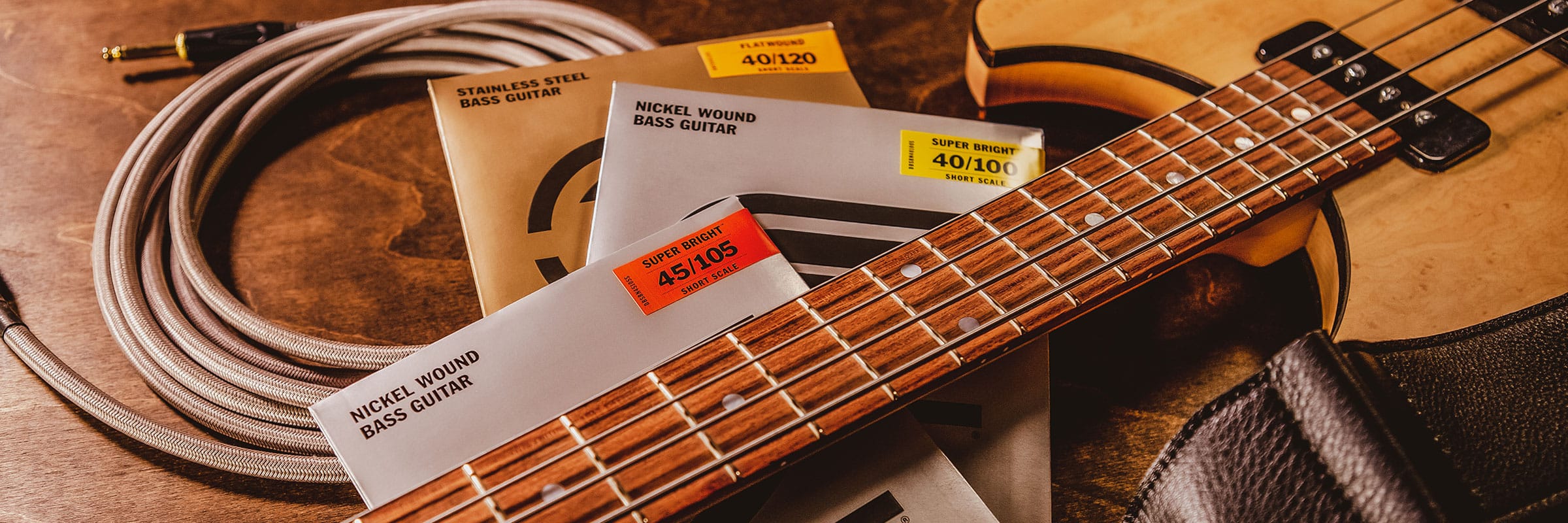For a long time, short and medium scale bass guitars have been dismissed as instruments for newbies or players on a budget. In recent years, however, a growing number of experienced players have turned to them for the unique playing experience they offer when compared to the standard long-scale bass guitars that dominate the field. What is it, specifically, that these players are drawn to, and what can short-and medium-scale basses do for your playing experience?

This newfound interest in shorter scale length is actually a return to form. The first-ever electric bass guitar was the Audiovox Model 736, produced in the mid-1930s. From the string’s point of contact with the saddle to nut—the distance commonly referred to as scale length—the Model 736 measured just over 30 inches. It wasn’t until Leo Fender created the Precision Bass nearly 15 years later that what came to be called long scale would first hit the market. The immense popularity of the Precision Bass, and later the Jazz Bass, established their 34-inch scale length as the norm. Gibson’s first electric bass guitars, such as those in the EB series, measured in at 30.5 inches, while the later Thunderbird came to 34 inches.
In the years since, manufacturers have released bass guitars of varying scale lengths, and players tend to group their instruments into one of three categories: short scale for 30 to 30.5 inches, medium for 32 inches, and long for 34 inches and, occasionally, 35 inches. Not every bass will fit neatly into this breakdown—Rickenbacker’s 4000 series bass guitars have measured at 33.5 inches from bridge to nut since their debut in 1957—but those categories cover the majority of basses you’ll encounter.

Despite the association of short and medium scale basses with kids and beginners, they’ve always been used by the pros, from Jack Bruce and Paul McCartney to Phil Lesh and Stanley Clarke. So what is it that these and a growing number of today’s players get from short and medium scale basses?
“Shorter scale instruments are often easier to play,” says luthier Jake Serek of Serek Basses. “Especially for those who have a hard time navigating the fingerboard of larger instruments.” People are just shaped differently. Hands are different sizes, arms are different lengths—it only makes sense to choose an instrument whose construction allows you to play comfortably.
“The shorter neck allows me to play parts that would otherwise be too far of a reach or stretch,” says prolific gigging and recording artist Chris Chaney. “I usually play P basses so when I jump on a short scale bass I feel like its a hotrod and my chops definitely get a positive injection.” Four inches makes a huge difference when you’re trying to move from an F with your index finger on the E string to a B on the G string with your pinky. Luthier Carey Nordstrand of Nordstrand Audio likens it to putting on a new pair of sneakers. “It makes you run faster and gives you powers you always wished you had. Everything is easier.”
For this reason, short and medium scale basses are also great options for musicians who primarily play guitar but need to switch to bass on a regular basis—going from a Strat to an EB3 or a Mustang can be an easier transition than going to a P Bass.
It’s not just about feel, though. “Short scales with the right strings give a naturally, rich, deep, rounded tone,” notes luthier Viv Wilcock, owner of Wilcock London. A shorter length means lower tension, making for a sound that’s warm, fat, and punchy in its own way. Dave Swift, long-time bassist for BBC television staple Later…with Jools Holland, has recently started exploring short-scale basses via Wilcock London, and agrees with the luthier. Especially when bringing flatwound strings into the mix. “They can produce a particularly bassy, tubby, thuddy, muted sound that is highly desirable playing certain genres and styles,” he says. “Ska & reggae spring to mind.”

A great set of strings is purpose-built for the type of instrument they’re meant to be played on. Check with your manufacturer to find out the scale length of your instrument and follow the recommendations of the string manufacturer to find the right set. Otherwise, you might end up a section of the string that’s too thin—sometimes still covered in silk—for its nut slot, which creates buzzing. Or, even worse, you might end up with a string that’s too thick to wrap around the tuning peg, causing a break.
That’s why Dunlop makes sets of strings specifically designed for short-scale and medium-scale basses. Our string designers take great care to ensure a consistent, balanced sound and feel form string to string—working musicians and the top builders of short and medium-scale basses can testify to the success of that process. “Dunlop offers a great variety of short and medium scales strings to fit almost any tonal profile,” Jake Serek says. “I use them on the basses that I make because they are consistent, they sound great, and the folks at Dunlop are great to work with.” Viv Wilcock is partial to Dunlop’s short-scale Flatwound Bass Strings. “They offer a great balance between tension and flexibility that enhances the old school dynamics and tone that many players are looking for from my short scales,” he says. “We’ve used Dunlop Strings from the beginning, and their short scale strings work great with the Cat bass,” Carey Nordstrand says. “Fat and punchy with a nice easy feel.”
Beyond the workshop, Dunlop Bass Strings offer professional players the reliable paying experience they need to play take after take in the studio and night after night at live shows. “From pack to pack, they have been the most consistent strings I’ve ever used,” Chris Chaney says. “The short-and medium-scale strings also stay in tune, retain their sound for a remarkably long time, and have a nice break-in period. I’m a life-long Dunlop fan and can’t recommend them enough.” Also a years-long user of Dunlop Bass Strings, Dave Swift knew he could trust our short-and medium-scale sets, and he hasn’t been disappointed. “I particularly like the nickel Super Bright Bass Strings. I’ve always been extremely happy with their feel, sound, reliability and longevity. “
Dunlop’s short-and medium-scale sets come in a variety of sets to suit your playing needs, from our standard sets to flatwounds and Super Bright™ Bass Strings.
String up with the set of Dunlop Bass Strings that was made for you.





